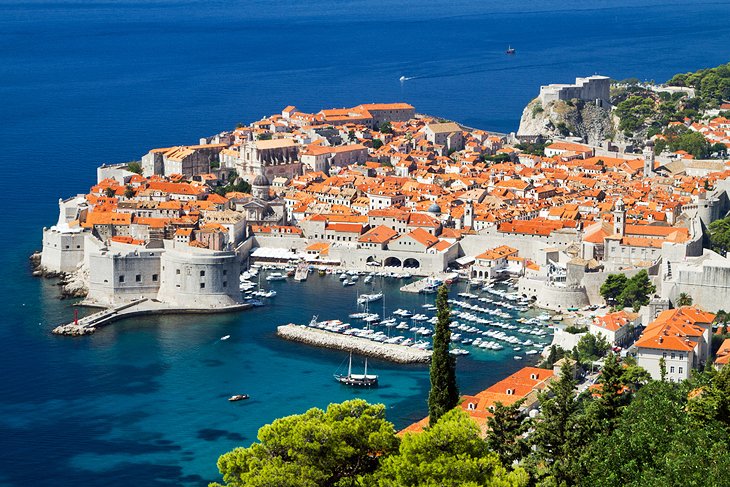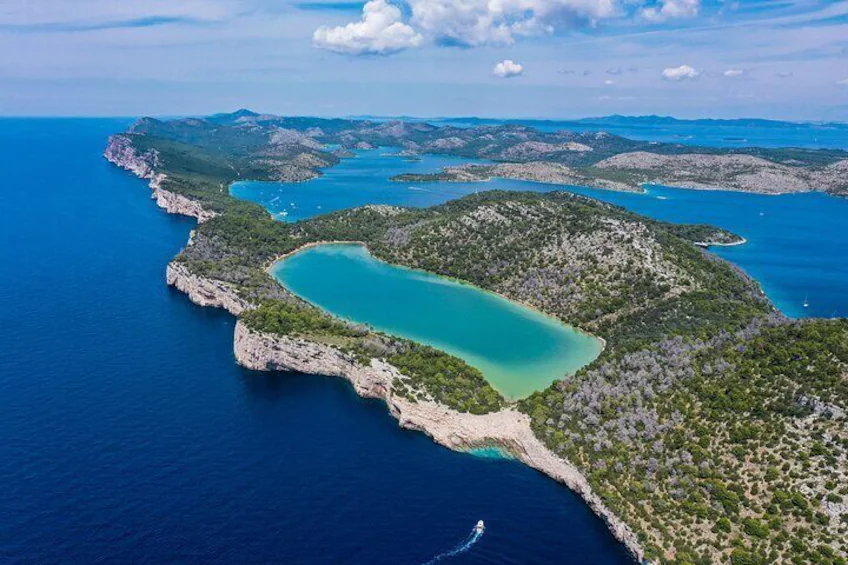Dubrovnik Old Town

Originally called Ragusa, Dubrovnik is a city by the Adriatic Sea in southern Dalmatia, Croatia. It is a seaport, the hub of Dubrovnik-Neretva County, and one of the most popular tourist attractions in the Mediterranean. There were 41,562 people living there as of 2021.The Old City of Dubrovnik was designated as a World Heritage Site by UNESCO in 1979 in recognition of its exceptional medieval architecture and fortifications. When refugees from Epidaurum (Ragusa Vecchia) formed the town known as Ragusa in the 7th century, the city's history most likely began. Prior to being governed by the Republic of Venice, it was a protectorate of the Byzantine Empire. From the 14th century until the 19th century, Dubrovnik operated as a free state. Historically, the city's economy was derived from maritime trade; as the capital of the maritime Republic of Ragusa, it developed to a remarkable degree, especially in the 15th and 16th centuries, when its richness and diplomatic prowess made it noteworthy.At the same period, Croatian literature emerged from Dubrovnik. Poet Ivan Vidalić referred to it as the "crown of Croatian cities" in a letter to Nikola Nalješković (1564).In 1667, a severe earthquake nearly devastated the entire city. Following the French Empire's occupation of Dubrovnik during the Napoleonic Wars, the Republic of Ragusa was disbanded and merged into the Napoleonic Kingdom of Italy, which subsequently became part of the French Illyrian Provinces.
About 20 kilometers (12 miles) southeast of the city center, close to Čilipi, is Dubrovnik's own international airport. The historic major bus station in Gruž, Dubrovnik, is connected to the airport by bus. All of the neighborhoods of Dubrovnik are also connected by a network of contemporary local buses that run regularly from sunrise to midnight. But unlike Croatia's other major cities, Dubrovnik is not reachable by rail. Prior to 1975, a narrow-gauge (760 mm) railway that was constructed under the Austro-Hungarian occupation of Bosnia connected Dubrovnik to Mostar and Sarajevo.It is intended to expand the A1 highway, which now runs from Zagreb and Ploče, all the way to Dubrovnik. The highway will either pass via Neum in Bosnia and Herzegovina and continue to Dubrovnik, or it will cross the Pelješac Bridge, whose construction was finished in 2022 [citation needed][109]. This is because the area surrounding the city is cut off from the rest of Croatia.There are several higher education institutes in Dubrovnik. These include the University of Dubrovnik, the Libertas University (Dubrovnik International University), the University of Zagreb's University Center for Postgraduate Studies, the Rochester Institute of Technology Croatia (formerly the American College of Management and Technology), and the Croatian Academy of Sciences and Arts' Institute of History.
Together with Denmark and Norway, the city hosted the 2025 World Men's Handball Championship at the new arena.
For many years, NK GOŠK Dubrovnik, a local football team, has been competing in the third division of the Croatian football hierarchy.
Numerous members of the Croatia national water polo team play for the local water polo team, VK Jug, which is one of the most successful in Croatian history.Exploring the Stradun, a broad pedestrian promenade spanning 300 meters and dotted with shops, cafés, and eateries renowned for their white limestone cobblestones, is another enjoyable activity to do in Dubrovnik.
Fort Lovrijenac, one of the nation's most significant fortresses; the stunning cathedral; and the Square of the Loggia, a historic meeting spot renowned for its charming ancient buildings and monuments.
You would need to take a bus or cab to go to the Old Town if you arrived in Dubrovnik by boat, cruise ship, bus, or if your lodging is in Gruž. The Old Town is roughly 3 kilometers distant from Gruž. Take a taxi or Uber, or bus numbers 1A, 1B, and 3.Medieval walls that were initially constructed in the eleventh and thirteenth centuries enclose the ancient town. There are no cars allowed inside the old town; it is a pedestrian-only area. Beautiful red terracotta rooftops and baroque-style buildings with limestone streets may be found in the old town.
Your preferences will determine the ideal time of year to visit Dubrovnik. May through August is the best time of year for most tourists because of the warm, dry weather, but it's also the busiest time of year, so costs and crowds are greater. Consider going during the rainy winter months of November through March to save money.
By Admin
19 May 2025
.jpeg)

.jpeg)
.jpeg)

